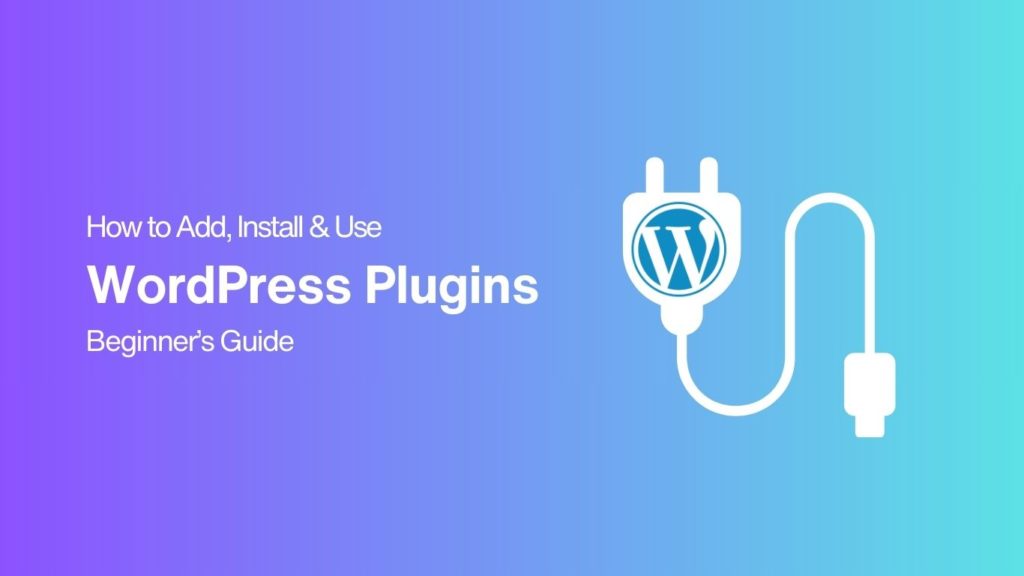WordPress is one of the most popular website platforms in the world, thanks in large part to its vast ecosystem of plugins. Plugins are tools that enhance the functionality of your WordPress website, adding features without requiring you to write any code. If you’re new to WordPress, understanding how plugins work and how to choose the right ones is essential for building a successful site.
In this guide, we’ll walk you through everything you need to know about WordPress plugins, from what they are to how to use them effectively.
What Are WordPress Plugins?
A WordPress plugin is a piece of software that extends the capabilities of your website. Whether you need to improve site speed, enhance security, optimize SEO, or add new features like contact forms or social media buttons, there’s likely a plugin that can help.
Plugins are installed and activated directly from your WordPress dashboard, and most of them are easy to use. Some are free, while others are premium and require a purchase.
How to Install a Plugin in WordPress?
Before we dive into how to choose the right plugins, it’s important to understand how to install them on your WordPress site. Here’s a simple guide:
- Go to the Plugins Section:
- From your WordPress dashboard, navigate to the “Plugins” section on the left sidebar, and click “Add New.”
- Search for a Plugin:
- Use the search bar to find the plugin you want to install. You can also browse featured, popular, or recommended plugins.
- Install the Plugin:
- Once you find the plugin, click the “Install Now” button. After installation, the button will change to “Activate.”
- Activate the Plugin:
- Click “Activate” to enable the plugin on your website.
Types of WordPress Plugins You Should Know About
There are thousands of plugins available, but here are some of the most commonly used types:
- SEO Plugins:
- SEO plugins help you optimize your website for search engines. The most popular choice is Yoast SEO, which offers tools for optimizing your content, titles, meta descriptions, and more.
- Security Plugins:
- Security plugins are crucial for protecting your site from hackers and malware. Wordfence Security and iThemes Security are two of the most well-known options, offering features like firewall protection and malware scanning.
- Performance Plugins:
- Website performance is vital for both user experience and SEO. Plugins like WP Rocket and W3 Total Cache can help speed up your website by enabling caching, compressing images, and reducing page load times.
- Backup Plugins:
- Regular backups are essential to prevent data loss. Plugins like UpdraftPlus and BackupBuddy make it easy to back up and restore your site when needed.
- Social Media Plugins:
- Social media plugins add social sharing buttons and allow you to integrate your social media accounts. Social Warfare and AddToAny are popular options for encouraging visitors to share your content.
- E-commerce Plugins:
- If you plan to run an online store, you’ll need an e-commerce plugin. WooCommerce is the most popular choice, turning your WordPress site into a fully functional online store.
How to Choose the Right WordPress Plugin?
With thousands of plugins available, choosing the right ones for your website can be overwhelming. Here are some tips to help you make the best decision:
- Identify Your Needs:
- Start by identifying what features your website requires. Do you need a contact form? Want to improve SEO? Need to secure your site? Knowing what you need will help you narrow down the list of plugins.
- Check Plugin Ratings and Reviews:
- Always check the ratings and reviews of a plugin before installing it. Look for plugins with high ratings and a large number of active installations. This indicates that the plugin is well-supported and trusted by the WordPress community.
- Check Compatibility with Your WordPress Version:
- Ensure the plugin is compatible with your version of WordPress. Most plugins are updated regularly, but it’s always a good idea to verify this before installation.
- Consider the Plugin’s Performance Impact:
- Some plugins can slow down your website. Be cautious when installing too many plugins or using those that have heavy resource requirements. Always monitor your website’s performance after adding new plugins.
- Evaluate Support and Updates:
- Choose plugins that are regularly updated and well-supported. Check the plugin’s support forum for user feedback and how quickly the developers respond to issues.
Best Practices for Using WordPress Plugins
While plugins are incredibly useful, it’s important to use them responsibly. Here are some best practices for managing plugins:
- Keep Plugins Updated:
- Plugin developers release updates to fix bugs, patch security vulnerabilities, and add new features. Always keep your plugins updated to ensure they are working properly and securely.
- Deactivate Unnecessary Plugins:
- Deactivate and delete plugins that you no longer need. Even inactive plugins can pose a security risk if they are not updated.
- Limit the Number of Plugins:
- Only install the plugins you absolutely need. Too many plugins can slow down your website and introduce potential security risks.
- Backup Before Installing New Plugins:
- Always back up your site before installing a new plugin. This way, if something goes wrong, you can easily restore your website to its previous state.
Final Thoughts
WordPress plugins are powerful tools that can enhance your website in countless ways. Whether you’re looking to improve site speed, boost security, or add new features, there’s a plugin out there to help. By carefully selecting, installing, and maintaining your plugins, you’ll be able to create a fully optimized and functional WordPress website.
Remember to choose plugins wisely, and always keep them updated to ensure your site runs smoothly and securely.

